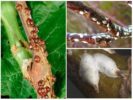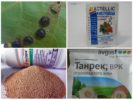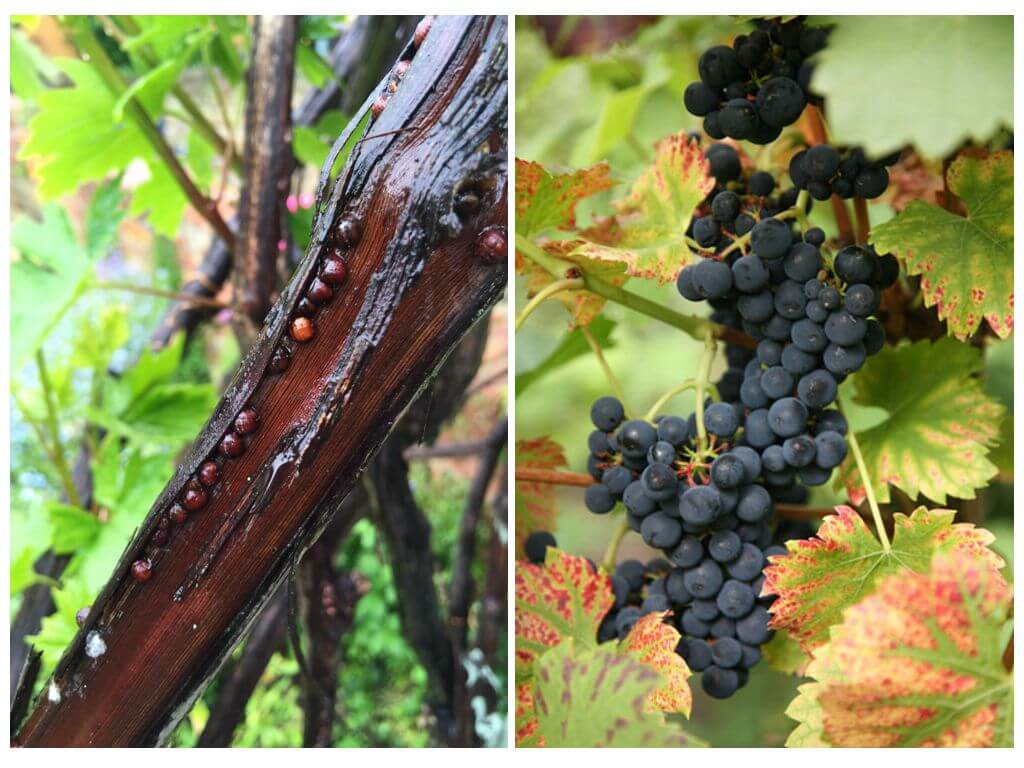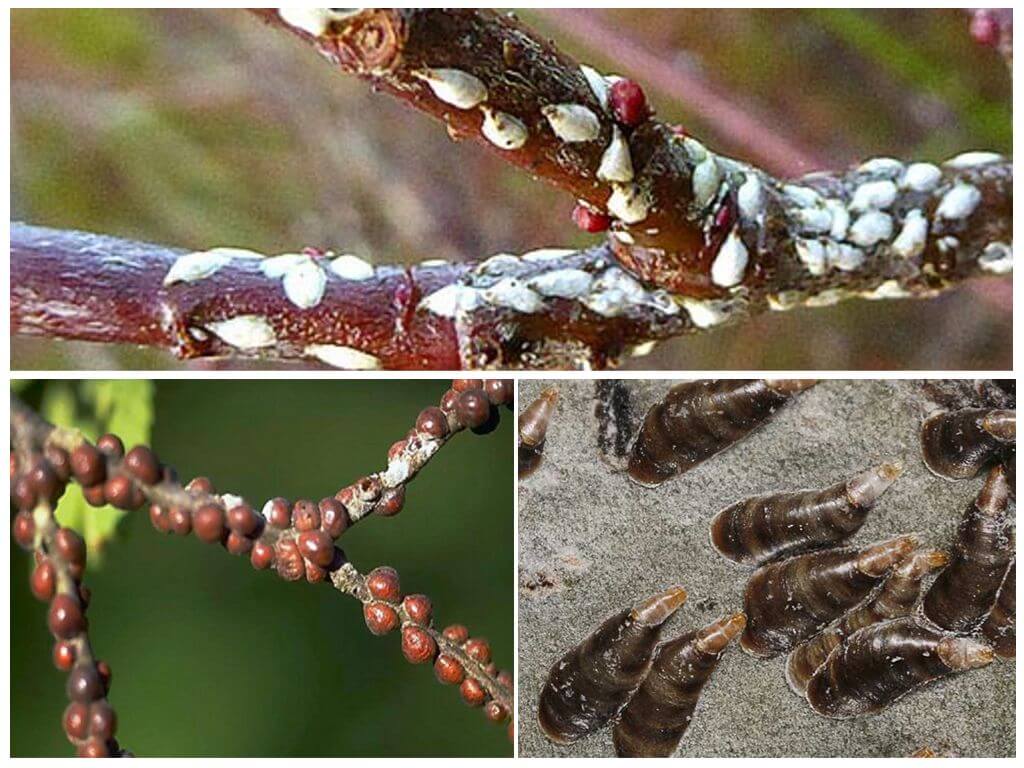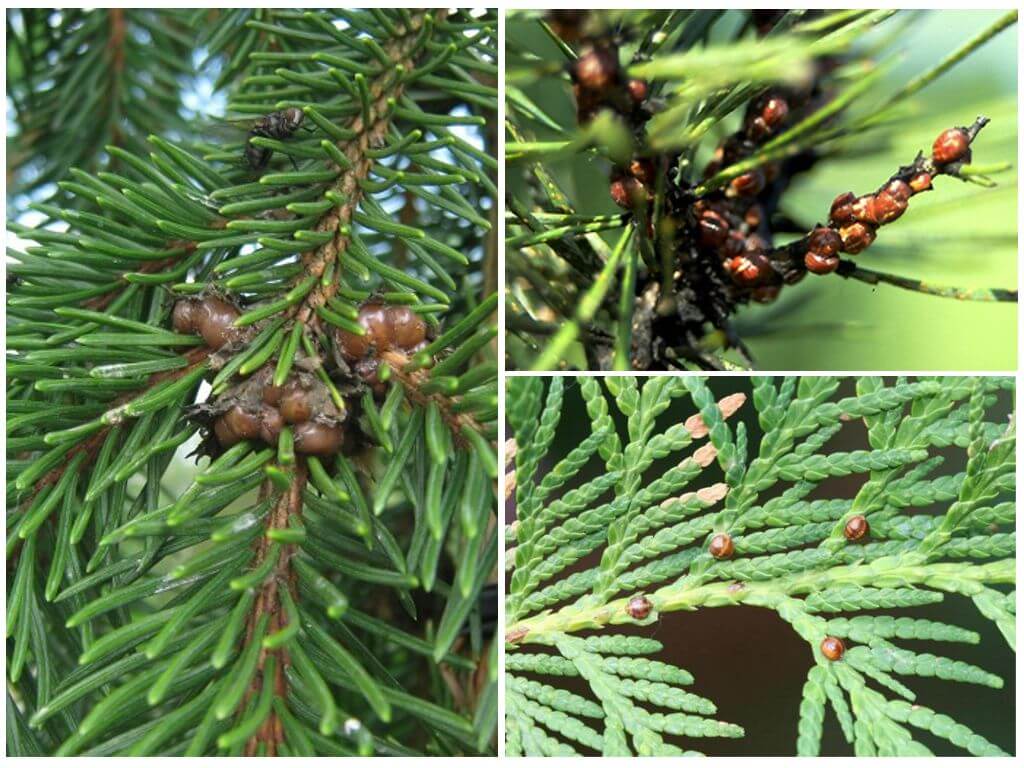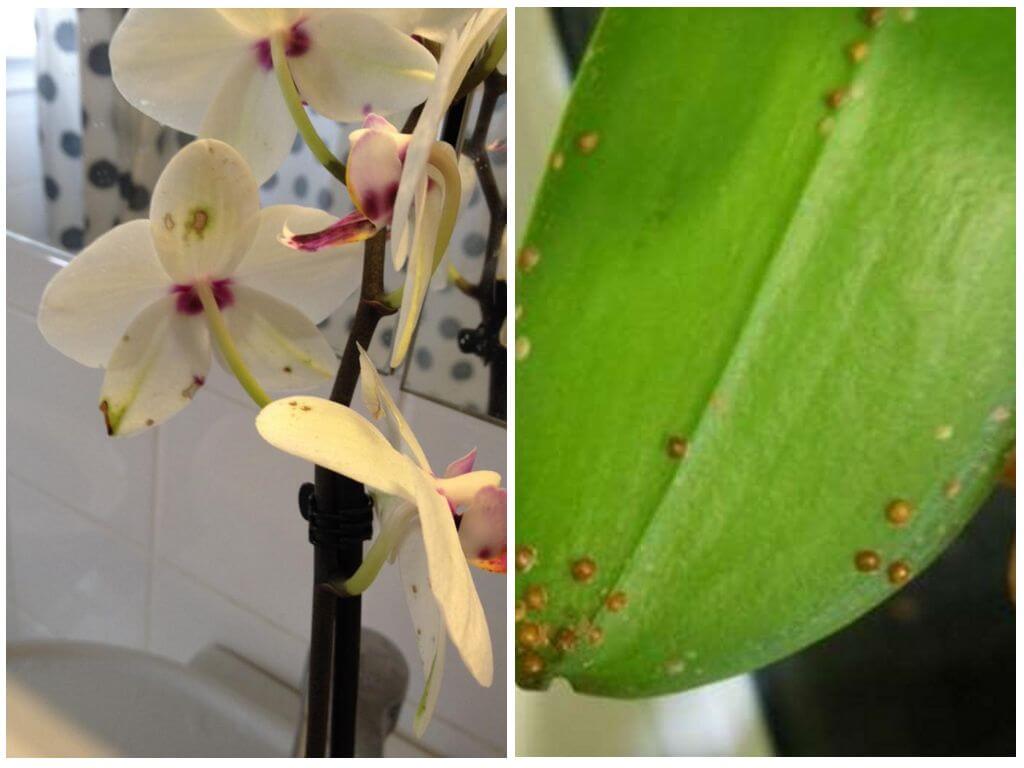- Californian and willow scale insects
- Folk methods of getting rid of scale insects
- Pest preparations
Experienced gardeners know how to deal with a currant on a currant. The insect is one of the most common pests of this culture. It is forbidden to take seedlings and fruits from plantations infected with scale insects, and quarantine is declared. Infection occurs through imported soil, seedlings, or using the wind.
Appearance, features of life
In nature, there are several types of scale insects. They differ in color. Body color from gray-brown to red, with specks and patterns on the shell. A photo of the willow scale on the currant can be seen below. This is one of the most common pests of this culture. An adult reaches 2.5 mm.
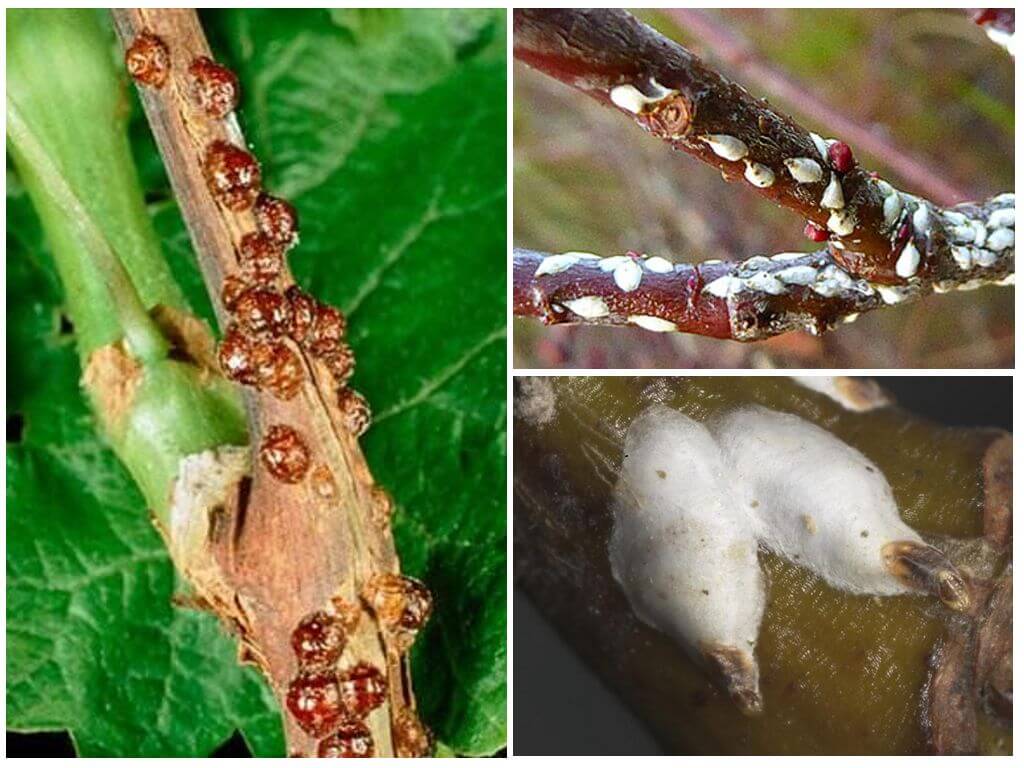
On a note!
Noticing one bug is quite difficult. But due to the fact that they settle in colonies, the presence of pests can be determined with the naked eye. Scabies hide on the back of leaves, on stems, young twigs. Fight with guards in the garden need on neighboring trees such as spruce, lemon, grapefrom where they can crawl onto the currant.
The female is motionless. Its main task is to lay eggs. According to various sources, one individual lays from 250 to 500 pieces. Over the entire warm period, the female manages to give birth to two generations. In early spring, lays eggs on young leaves of currant, near the kidneys. After 3 months, small bugs appear from there, who were nicknamed tramps.
Larvae are extremely mobile, are in search of food. If soft parts of the plant are found, larvae begin to feed its juice. The second time the female lays eggs closer to the fall. They develop under the shield, they winter there. The shell protects the eggs from the effects of insecticides, low temperatures in the winter. Over time, the female dies, and small bugs appear from the eggs in early spring.
Important!
You can notice the infection of currants in appearance. The leaves begin to curl yellow, blacken, spots appear, after a while they fall completely. Inflorescences crumble, the fruits dry. Young branches dry up. Severe infection of the bush with a scab is dangerous by the complete drying of the plant. In the absence of necessary measures, the currant plantation disappears from the face of the earth in 3-4 years.
Folk methods
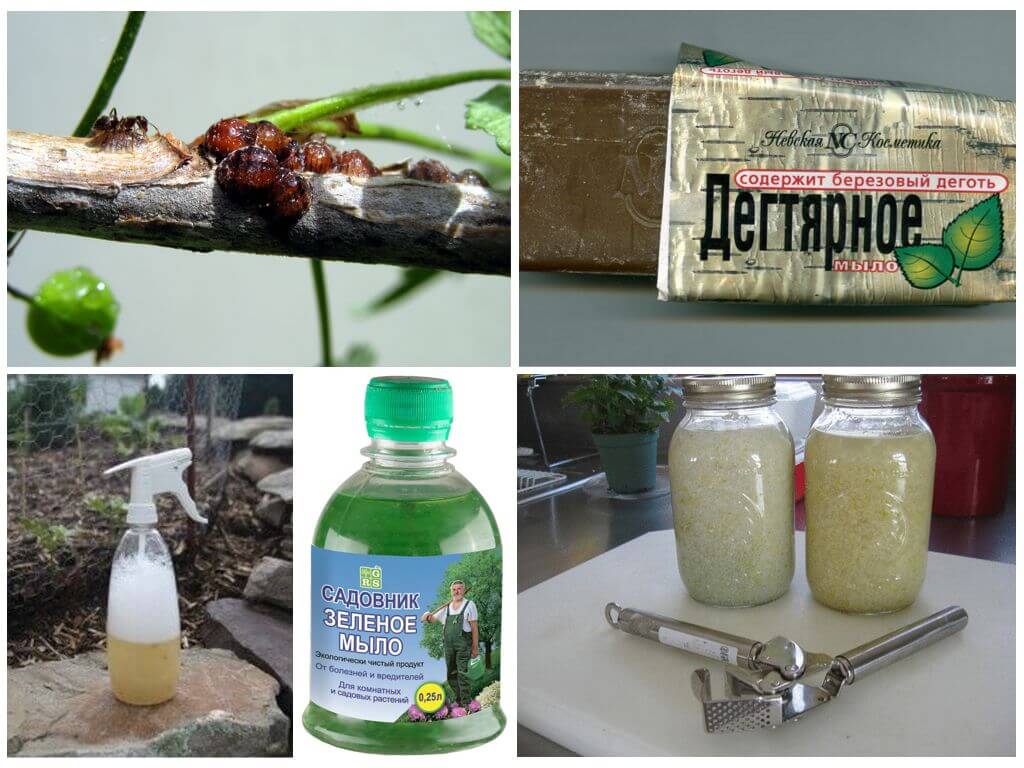
To prevent the infection of currants, spring and autumn spruce bushes, sprinkle soil with wood ash. In spring, the layer is removed, the earth around the bush is dug up. If the scabbard has managed to breed, you can use the following methods:
- Dilute soap or tar in water. Spray the plant, paying particular attention to the leaves on the back. Or carefully wipe each leaf with a brush, washcloth.
- Dissolve laundry soap, sprinkle liberally with currants from the scab. Rinse off with water the next day.
- In boiled water add wood ash, any soap. Sprinkle currants, water the soil.
- Grind garlic, pour cold water, insist a day. Strain, spray the bush.
- Dilute green soap in water, add red pepper, black, cinnamon, mustard. Spray currant bush.
- Pour tobacco with boiled water, insist a day, strain.Add soap, spray the plant. Or powder with tobacco powder.
The fight against scabies with folk remedies involves the processing of currants for 2-4 weeks with a frequency of 3 days. The advantage of the method is its safety. It can be used at any time during the growing season.
The use of professional drugs
You can get rid of the scallop on the currant in one treatment, if you select an effective drug, timely respond to the problem. It is necessary to prevent infection in the spring, before the leaves bloom.
Processing is not recommended during flowering, as bees can suffer, and productivity will decrease. You can not process currants during the ripening period. The best option for using insecticides is early spring, late summer after harvest. In the interval should be used folk remedies.
Important!
Insecticidal preparations retain properties from 1 to 3 months. Processing in the early spring provides protection of currants from a scutellum for the whole summer. But reduce the effectiveness of the means of torrential, prolonged rains in the first week of treatment. Repeated spraying is allowed after a month.
Effective drugs

Remedies for scabies on currants can be bought in a specialized store. The following drugs have high efficiency and affordable price:
- Actellik. The solution is prepared immediately before use. Spray from a garden spray bottle or spray bottle. Not addictive in insects.
- Actara. An effective drug with a wide spectrum of action. Active components concentrate in the leaves, poison pests through the esophagus. Among the shortcomings is an unpleasant smell.
- Tanrek. Spray currants, water the soil, apply to the bark. Protection is enough for several months. Be sure to carry out treatment from scale insects in early spring and late autumn.
In addition to insecticides, bacteriological agents can be used. Processing is recommended twice a month. It is necessary to get rid of scale insects in a timely manner. If everything is left to chance, currants can simply die.
